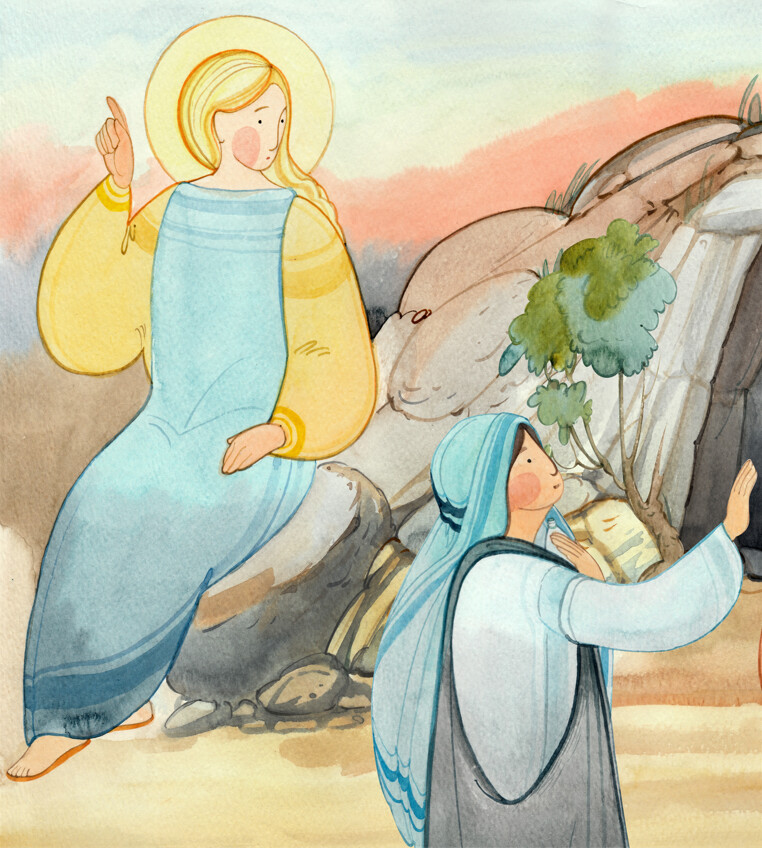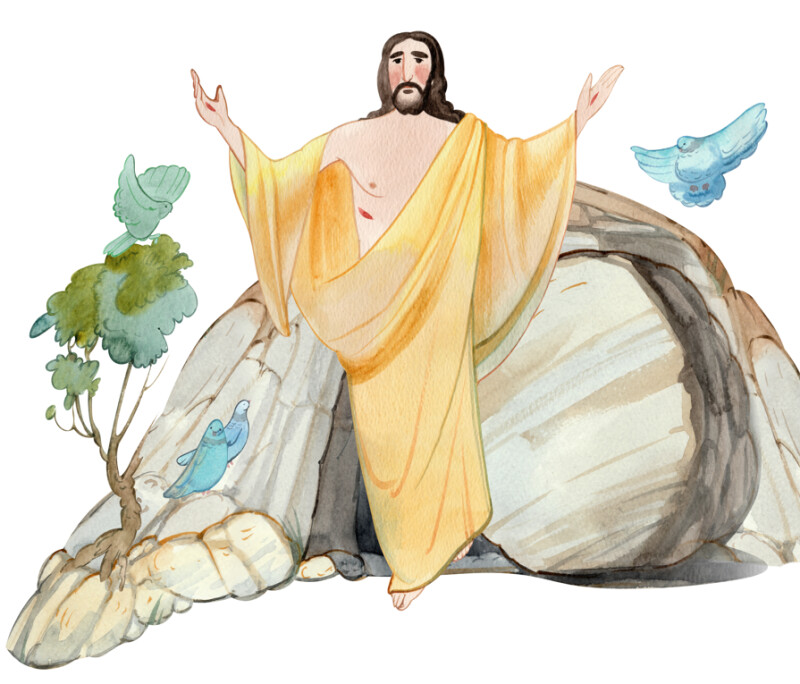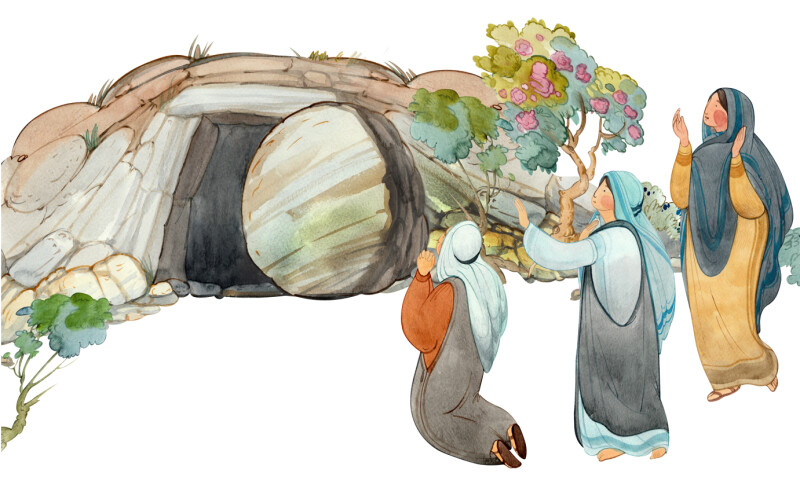This article originally ran in the March/April issue of LDSLiving Magazine.
In 1987, a friend and I backpacked around the world. One of our first stops was Israel. We spent about a week exploring Jerusalem, a copy of the Bible in one hand and a Let’s Go Europe in the other. One day we visited the Garden Tomb, just north of the Old City. My experience there forever impacted my spiritual world.
Although the Garden Tomb is probably not the actual tomb of Jesus,1 it is for me a spiritual oasis in both Jerusalem and in my mind and heart. On that first visit, I felt the Spirit so strongly as our volunteer guide sat us down and declared his personal witness. To the best of my memory, he testified, “Each year thousands of people come to this site to find the place where Jesus was buried. But I am here to witness to you, along with the angel who spoke so long ago to the women present at the empty tomb, ‘Why seek ye the living among the dead? He is not here, but is risen’ (Luke 24:5–6).”
Over the years since that experience, my testimony of Christ’s Resurrection has been deepened by further studying what His female disciples experienced during this pivotal event. Luke’s Gospel is particularly poignant because earlier in his account he notes that Jesus was accompanied by a certain group of women and the Twelve when He embarked on His journey from Galilee to Jerusalem (Luke 8:1–3). This travel narrative suggests that these women were a significant part of His ministry and witnessed His teachings, miracles, and the Crucifixion and Resurrection—and I believe we have much to learn from them.
With Christ in Life and Death
Some scholars have suggested that these women served in a sort of leadership role for female disciples of Jesus. Mary Magdalene is mentioned first,2 along with Joanna the wife of Chuza Herod’s steward, Susanna, and “many others” (Luke 8:3). Luke notes that these women “ministered unto [Jesus] of their substance” (Luke 8:3). The word “ministered” in verse 3 is a translation of the Greek verb diakoneo-, which means that they helped support Jesus and His followers during this journey. Thus, as one scholar notes, the text portrays Mary Magdalene, Joanna, and Susanna “as persons who both hear and act on the word of God” (see Luke 8:21; see also Luke 6:46–49).3
Women also play an important supporting role in the events on Easter Sunday. All four Gospels describe women being at the tomb early on Sunday morning. Mark and Luke specifically mention that the women were there with spices to take care of Jesus’s body (see Mark 16:1; Luke 23:56). Under normal circumstances, the women would have taken care of the body soon after it was placed in the sepulchre, but they had postponed their ministrations until after the Sabbath (see Mark 16:1). As essential as it was for them to attend to Jesus’s body, these women remind us of how important the Sabbath was for Jesus and His followers.
It is hard for me to fully imagine what the women must have experienced as they came to the tomb and found it empty. Even though Jesus had taught His disciples that He would rise again from the grave, it seems they did not expect it. Luke says that the women were “much perplexed” (Luke 24:4), and rightly so. Nothing like this had ever happened before! They immediately went to the 11 Apostles, but the disciples also struggled to comprehend the possibility and “believed them not” (Luke 24:11).
John’s account of Resurrection morning is different from the other Gospels because it focuses on Mary Magdalene. In John’s account, only she came early to the tomb. There is no record of her bringing spices with her, and we can only assume that, like Mary and Martha had done for Lazarus (see John 11:31), she came to mourn for Jesus.4 It seems she was expecting the stone to still be in place because when she found that the stone was taken away from the sepulchre, she ran to tell the news to Peter and “the other disciple,” who is presumably John. Both came, found the tomb empty (except for the grave clothes), and returned home (see John 20:3–10).
We don’t know why Mary Magdalene chose to stay when Peter and John left, although we get a sense of her grief as we read of her standing outside the sepulchre weeping (see John 20:11). But we do know that because she stayed Mary received two magnificent revelations, both of which I treasure deeply in my heart.

First, when Mary looked into the sepulchre, she saw two angels who recognized her grief and asked, “Woman, why weepest thou?” Mary responded, “Because they have taken away my Lord, and I know not where they have laid him” (verse 13). Although Mary in her grief may not have immediately appreciated the implication of the angels’ presence, readers recognize that they indicated the empty tomb was not the crime of grave robbers, but the holy work of God.5
The second revelation came as Mary turned and saw a man, whom she supposed to be the gardener. This man repeated the question posed by the two angels and then added another: “Whom seekest thou?” (verse 15). She responded in the same manner that she had to the angels’ question. It isn’t until Christ called her by name—because He is the Good Shepherd who knows His sheep and calls them by name (see John 10:3, 14)—that she recognized Him.6 With that recognition, Mary clung7 to Jesus, so much so that He asked her to stop. Jesus’s new life was not the same as His old life; as He taught the disciples earlier, He must ascend to the Father (see John 14:28). This is the witness that Mary eagerly brought to the other disciples.
I love how Mary’s brief conversation with Jesus shows the depth of her role as a disciple: the question He asked her resembles the moment when He asked John and Andrew, “What seek ye?” near the start of His ministry (see John 1:35–38). These two questions at the beginning and end of the Gospel show how Mary and the first Apostles shared a similar journey in seeking the Savior. It also highlights a major theme of John’s Gospel: the revelation of Jesus’s divine identity and mission does not come to the spiritually passive but rather to those who actively seek for it.8 I’ve seen that truth in my own life.
The Savior Will Always Come
Some 35 years have passed since my first trip to the Garden Tomb. That visit and subsequent ones have helped me to think more deeply about the Savior and reflect on the women who witnessed the empty tomb as well as Mary Magdalene’s personal witness of His Resurrection. Like Mary, the mother of James, Joanna, Salome, and others, I have visited an empty tomb in a garden and have pondered the implications of Jesus’s victory over death for me. I am so grateful that I shared one of my visits to the Garden Tomb with my sister, Cherie. Little did we realize as we sat and talked about the importance of Christ’s Resurrection for us that within five years she would leave mortality, and two years later, to the day, her youngest daughter would follow her. The pain of their passing is real and ongoing, but the hope that comes from the Resurrection is also very real for me.
I can’t begin to imagine what Mary must have felt in the garden as the Lord called her by name and she realized He had risen. Mary wasn’t in the garden by accident; she was there because ever since the Savior had ministered to her, she had given her time and means to minister to Him. I don’t believe that she was at the tomb just out of responsibility to prepare the body for burial, but that she came because she loved the Lord, knew of His divine mission, and longed to be with Him—because even though she found an empty tomb, she stayed after others left.

I frequently ponder how I, too, can minister to Him of my substance. I can certainly further the work of the kingdom through tithing, fast offerings, and donations. I can consecrate my time and energy by serving and magnifying my stewardships in the Church. Perhaps even more importantly, I can, as Elder Neal A. Maxwell taught, offer my will on the altar of sacrifice because that is truly the only unique thing I have to offer that God hasn’t given me in the first place.9
It seems to me, though, that there are times when I can do all these things and still feel that the tomb is empty—that the heavens are closed to me. Mary’s experience, however, reminds me that the Savior will always come to me; the problem is that sometimes I think He is just the gardener, or someone who happened to drop by at the right time, or by some other coincidence. But Mary’s story teaches me that when He comes, in whatever form that may be, He will call my name because He knows who I am and He cares about me. I may not be able to reach out and embrace him in a tangible way, but that does not negate the reality of His presence at my side, nor the depth of His love for me.
What happened on that early Easter Sunday was not just that Jesus overcame the grave but, as Paul taught the Corinthians, “For as in Adam all die, even so in Christ shall all be made alive” (1 Corinthians 15:22). I live from day to day with that hope.
▶ You may also like: Photo gallery: The places where Jesus walked + what they look like today
Notes
1. The Garden Tomb is an Iron Age tomb that predates the time of Jesus by several centuries. Sometimes tombs were reused, but Matthew’s Gospel says that Joseph of Arimathea took Jesus’s body from Pilate, “wrapped it in a clean linen cloth, And laid it in his own new tomb, which he had hewn out in the rock” (Matthew 27:57–60; emphasis added; see also John 19:38–42). Mark and Luke do not mention that it was a new tomb (see Mark 15:43–46; Luke 23:51–53).
2. See Matthew 27:56, 61; 28:1; Mark 15:47; 16:1, 9; Luke 8:2; 24:10. The one exception is John 19:25–27, where Jesus’s mother, Mary, is mentioned first, and Jesus speaks directly to her from the cross. In this instance Mary Magdalene is mentioned after Mary and “his mother’s sister, Mary the wife of Cleophas.”
3. Joel B. Green, The Gospel of Luke, The New International Commentary on the New Testament, 1997, 320.
4. Marianne Meye Thompson, John: A Commentary, The New Testament Library, 2015, 411.
5. Thompson, John, 414.
6. This failure to initially recognize Jesus is a familiar response in other resurrection stories (see Luke 24:16, 31; John 21:4).
7. The Greek word translated as “touch” in the KJV is hapto- and can mean to “cling to.” The imperfect form of the verb suggests that it is an ongoing action.
8. Jesus also asks the same question twice of Judas and those who come to arrest him in the garden, but in that case they are only thinking of the mortal Jesus, “Jesus of Nazareth” (John 18:1–8).
9. Neal A. Maxwell, “Swallowed Up in the Will of the Father,” Ensign, Nov. 1995, 24.


